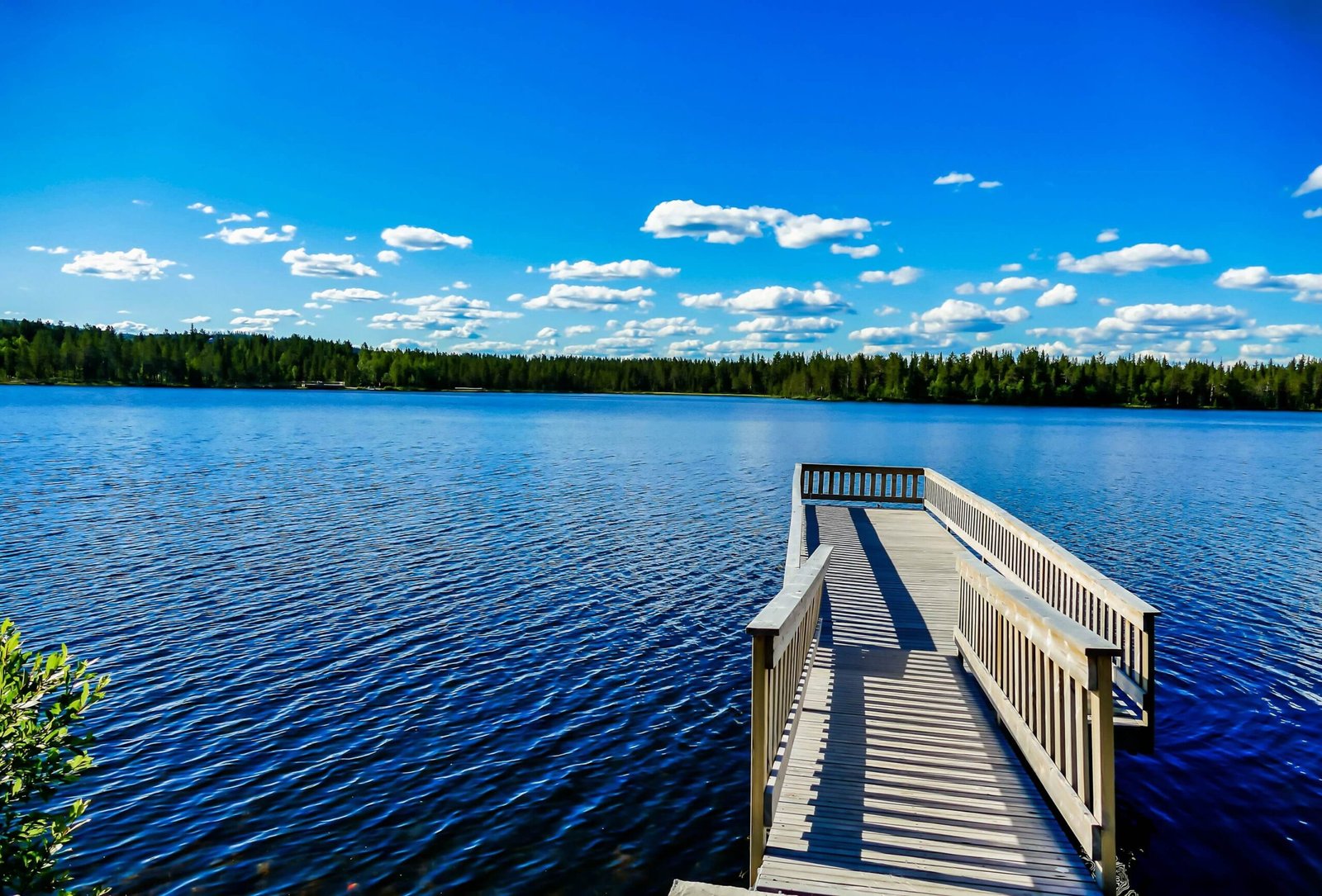Ontario, the heart of Canada, is home to some of the most stunning natural landscapes in the world. Among these, the Great Lakes stand out as a unique and captivating feature. For nature lovers, these lakes offer an unparalleled opportunity to connect with the environment, experience diverse ecosystems, and indulge in a range of recreational activities. In this article, we delve into the beauty of Ontario’s Great Lakes and explore why they are a nature lover’s paradise.
The Majesty of the Great Lakes
The Great Lakes consist of five immense freshwater lakes: Lake Superior, Lake Michigan, Lake Huron, Lake Erie, and Lake Ontario. Collectively, they form the largest group of freshwater lakes by total area in the world. Ontario is fortunate to share borders with four of these lakes, each offering its unique charm and beauty.
Lake Superior is the largest and deepest of the Great Lakes, boasting crystal-clear waters and rugged coastlines. Its vast expanse and dramatic scenery make it a favorite among adventurers and photographers.
Lake Huron, known for its pristine beaches and vibrant sunsets, is home to the famous Georgian Bay and the Bruce Peninsula. The turquoise waters and limestone cliffs of the Bruce Peninsula National Park are a sight to behold.
Lake Erie is the shallowest of the Great Lakes, which allows for warmer waters and more accessible swimming spots. The lake’s numerous islands, including Pelee Island, provide a tranquil retreat for those looking to escape the hustle and bustle.
Lake Ontario, the smallest of the Great Lakes, is no less impressive. It serves as the gateway to the St. Lawrence River and the Atlantic Ocean, making it a crucial waterway for trade and transportation. The lake’s northern shore is dotted with charming towns and cities, offering both natural and cultural experiences.
Ecological Wonders and Wildlife
The Great Lakes region is a biodiverse haven, home to a wide array of plant and animal species. They themselves support numerous fish species, including trout, salmon, and walleye, making them a popular destination for fishing enthusiasts. Moreover, the surrounding forests, wetlands, and dunes provide habitats for countless bird species, mammals, and insects.
In particular, the Great Lakes are a critical stopover point for migratory birds. Birdwatchers flock to locations such as Point Pelee National Park and Long Point Provincial Park to witness the incredible spectacle of thousands of birds passing through during migration seasons.
The region’s wetlands are also vital for maintaining ecological balance. They act as natural water filters, improve water quality, and provide breeding grounds for amphibians and reptiles. These ecosystems are essential for preserving biodiversity and ensuring the health of the lakes.
Recreational Activities for Nature Lovers
The Great Lakes offer a myriad of recreational activities that allow visitors to immerse themselves in nature. Whether you’re an avid hiker, a passionate angler, or simply someone who loves to relax by the water, there’s something for everyone.
Hiking and Exploring:
The Great Lakes region boasts numerous hiking trails that cater to all skill levels. From the rugged terrain of the Bruce Trail to the scenic paths of Algonquin Provincial Park, there’s no shortage of opportunities to explore the natural beauty of the area.
Water Sports and Boating:
The vast expanse of the Great Lakes makes them perfect for a variety of water sports. Kayaking, canoeing, and paddle-boarding are popular activities that allow you to experience the tranquility of the lakes up close. For those who prefer a bit more speed, sailing and motorboating are excellent options.
Fishing:
Anglers will find plenty to love about the Great Lakes. They are teeming with fish, and fishing is a year-round activity here. Whether you prefer ice fishing in the winter or casting a line from a boat in the summer, they provide a prime fishing experience.
Camping and Picnicking:
There are numerous campgrounds and picnic areas throughout the Great Lakes region. Spending a night under the stars, with the gentle lapping of the waves in the background, is an unforgettable experience. Many parks also offer amenities such as fire pits and barbecue grills, making it easy to enjoy a meal in nature.
The Cultural and Historical Significance
The Great Lakes are not only a natural wonder but also a region rich in cultural and historical significance. Indigenous peoples have lived in the Great Lakes basin for thousands of years, and their connection to the land and water is deeply rooted in their traditions and way of life. Many areas around the lakes are dotted with archaeological sites, petroglyphs, and ancient artifacts that tell the stories of these early inhabitants.
European exploration and settlement brought significant changes to the Great Lakes region. They became crucial routes for trade and transportation, and many cities and towns grew up along their shores. Today, these communities reflect a blend of indigenous heritage and European influence, offering a unique cultural tapestry for visitors to explore.
Toronto: The Urban Gateway to the Great Lakes
No exploration of Ontario’s Great Lakes would be complete without a visit to Toronto, the largest city in Canada and an essential gateway to the Great Lakes. Situated on the northwestern shore of Lake Ontario, Toronto offers a dynamic blend of natural beauty and urban sophistication.
Toronto’s waterfront is a hub of activity, featuring parks, beaches, and marinas that provide residents and visitors with ample opportunities to enjoy the lake. The Toronto Islands, a short ferry ride from downtown, offer a peaceful escape with stunning views of the city skyline. These islands are perfect for picnicking, cycling, and even birdwatching.
In addition to its natural attractions, Toronto is renowned for its cultural diversity and vibrant arts scene. The city is home to world-class museums, theaters, and galleries, as well as a thriving food and drink scene. From exploring the historic Distillery District to catching a show at the Royal Alexandra Theatre, there’s always something to see and do in Toronto.
For those planning a visit, explore why Toronto is a leading hospitality and tourist destination, offering a perfect blend of natural beauty and urban excitement.
Conservation Efforts and Sustainable Tourism
The Great Lakes are a precious natural resource that requires careful management and conservation. Various organizations and government agencies are working tirelessly to protect and preserve the health of the lakes and their ecosystems. Efforts include monitoring water quality, controlling invasive species, and promoting sustainable fishing practices.
Sustainable tourism is also a key focus in the Great Lakes region. Visitors are encouraged to minimize their environmental impact by following Leave No Trace principles, using eco-friendly products, and supporting local conservation initiatives. By doing so, we can ensure that the Great Lakes remain a pristine and beautiful destination for future generations.
Conclusion
Ontario’s Great Lakes are a treasure trove of natural beauty, offering a wealth of experiences for nature lovers and outdoor enthusiasts. From the rugged cliffs of Lake Superior to the serene beaches of Lake Huron, the Great Lakes region is a paradise waiting to be explored. Whether you’re seeking adventure, relaxation, or a deeper connection with nature, they have something to offer everyone. So, pack your bags, embark on a journey, and discover the unparalleled beauty of Ontario’s Great Lakes.


